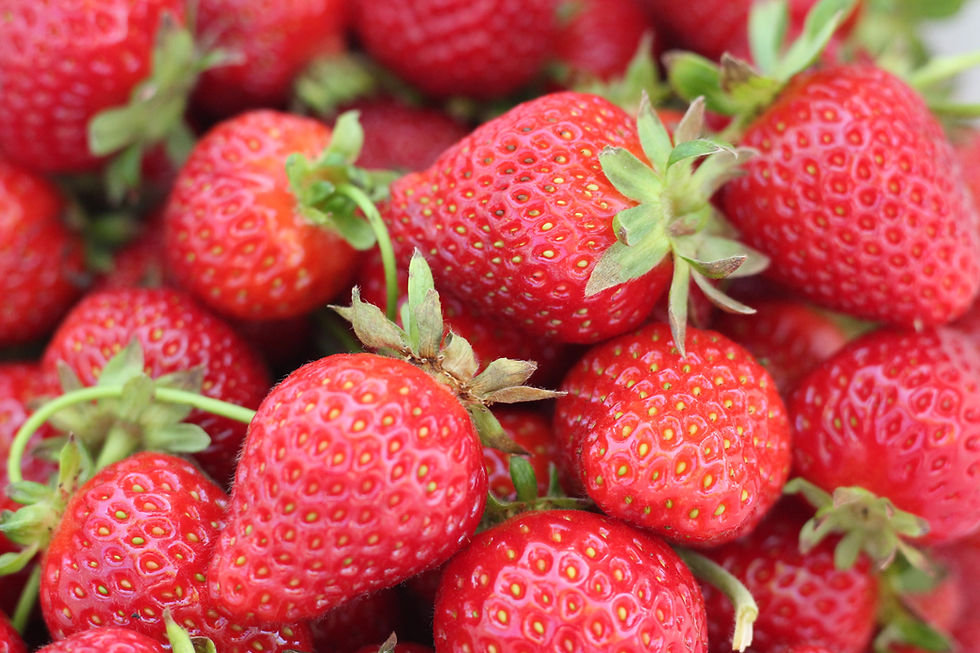Have you ever looked at your yard, or a spot in your yard, and thought, "I'd love to put something there"? Good news! You can! No matter the size, condition, or hurdle, we have you covered! Let Emerald Ladder Designs show you how simple it is to turn that unsightly patch of dirt into a lush, green vegetable-growing machine!
Bucket strawberries are a GREAT way to save space and add functionality to your plot.
1. Cut a piece of 4- to 8-inch-diameter PVC pipe to the desired height for the vertical planter, about 4 to 8 feet tall. You can easily cut through PVC pipe with a hacksaw, but you can also use a circular saw or miter saw.
2. Cut a series of 1 1/2-inch-diameter holes stacked vertically on three sides of the PVC pipe with about 6 to 8 inches of space between each hole in a vertical row. The holes on the two sides of the pipe should line up evenly, while the holes on the center row should be centered above and below the holes on the two sides of the pipe so the three columns of holes are staggered. Use a hole saw to cut the holes.
3. Cut five 1/8-inch-diameter holes spaced evenly apart through the bottom of a PVC end cap, using an end cap that matches the size of the PVC pipe. Use a power drill and an 1/8-inch drill bit.

4. Cut a piece of wire mesh screen to fit the inside of the end cap, put the screen inside the end cap, then attach the end cap to the bottom of the pipe with PVC cement. While not required for this project, the wire mesh screen helps prevent soil from falling through the drainage holes in the bottom of the pipe.
5. Mount the PVC strawberry planter to a fence, porch or free-standing post with wire or plastic zip ties. Mounting the planter when empty makes the pipe easier to handle and allows you to feed wire through the holes, if needed, to secure the pipe. The three sides with holes must face out away from the mounting structure.
6. Cut a piece of 1-inch-diameter PVC pipe about 4 inches longer than the vertical planter pipe.
7. Drill several 1/8- to 1/4-inch drainage holes through the 1-inch-diameter PVC pipe, starting 4 inches from one end and extending down the length of the pipe. Space holes about 6 inches apart at the top of the pipe, 3 inches apart in the middle of the pipe and only 1 inch apart at the bottom of the pipe.
8. Insert the 1-inch-diameter pipe inside the larger PVC planter pipe. The end with holes spaced 1 inch apart goes in the bottom of the planter and the end with wider spacing goes at the top. The smaller pipe down the center helps ensure even moisture to the bottom of the vertical planter.
9. Hold the 1-inch irrigation pipe in the center while you fill the space around it with potting soil. You can use a bagged potting mix or make your own blend, such as equal parts sphagnum peat, organic compost and coarse sand.
10. Plant strawberry transplants or runners in the planting holes on the sides of the PVC planter. The plants should stay in place well enough on their own, but if you have trouble, you can stuff straw through the holes around the plants to help hold the soil and plants in place.
11. Add water to the top of the PVC planter until the soil at the top feels moist, but not wet.
12. Fill the 1-inch irrigation pipe with water and wait about one hour for the water to absorb into the soil down to the bottom of the planter. Repeat this process until the pipe stays filled after one hour, indicating that the soil throughout the pipe is evenly moist. Dry soil contains air pockets that the water fills; the water stays in the pipe when there are no remaining air pockets in the soil.
Soon you'll be enjoying that strawberry rhubarb pie your Aunt Gloria used to make, or some fresh strawberries and honey!

Restarting through remote is otherwise called a 'delicate reset' and could get out any stored information or errors that may be causing the firestick restarting. To utilize your remote to restart, press and hold the Play and Select fastens all the while until your screen shows a restart message.